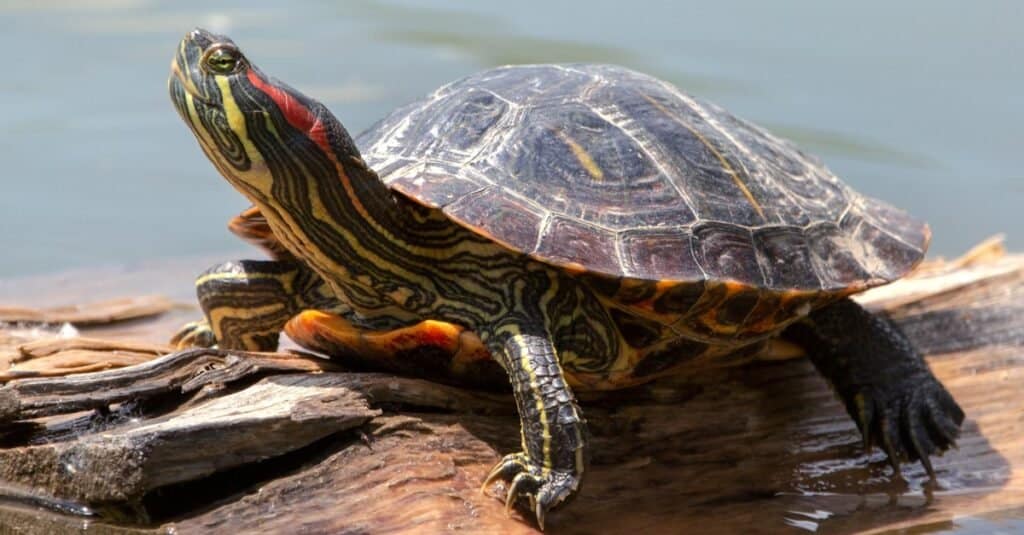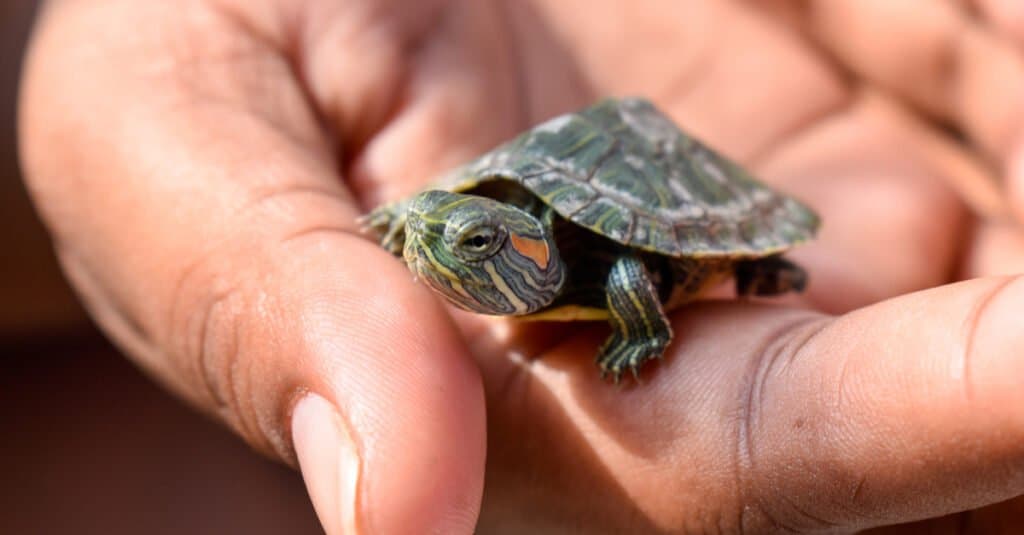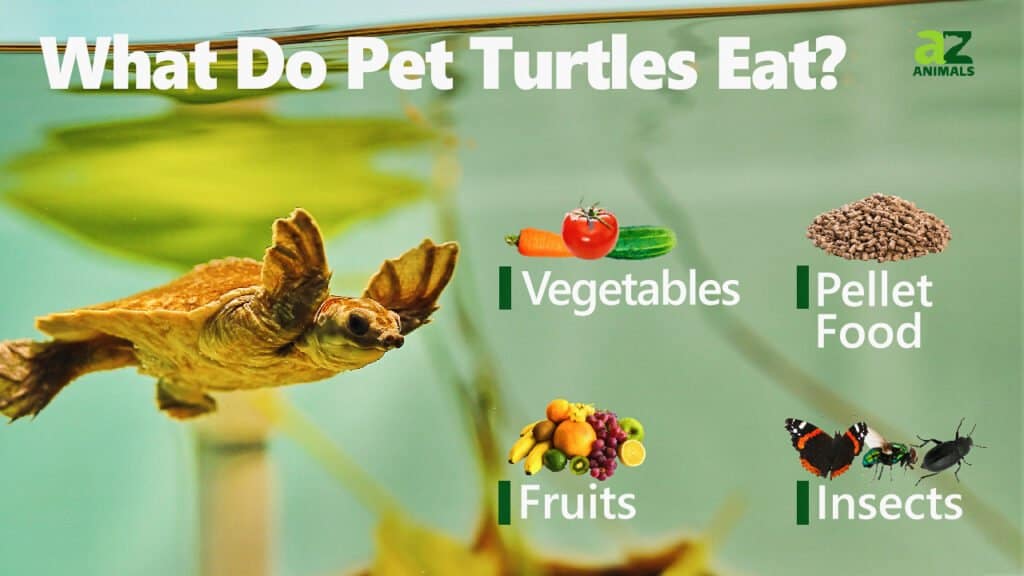The red-eared slider is notable for a number reasons. First and foremost, they’re the most popular pet turtle species in the United States. Second, they’re also one of the most invasive species on Earth. So, whether you’re a pet owner or seeing these turtle across the vast habitats they now live in, you might be wondering what exactly a red-eared slider eats. Let’s dive in!
What Do Red-Eared Sliders Eat in the Wild?

Red-eared sliders eat fish, insects, vegetables, leaves, and algae.
©Korkin Vadim/Shutterstock.com
Red eared sliders are omnivores and will eat any type of plant or animal they can find, such as fish, snails, insects, vegetables, and leaves. They’ll also sometimes scavenge dead animals if they don’t manage to catch their own prey.
In the wild, red eared sliders have a varied diet depending on what’s available in their environment. They might eat mostly plants one day and then switch to mostly animal prey the next.
This variety is important for their overall health, so it’s important to try and mimic this as much as possible in their captivity. In a dissertation from Missouri State University, it was found that the diets of adult sliders primarily consisted of green algae but will vary depending on the availability and time of year.
The foods that Red Eared Sliders eat include:
- Fish
- Snails
- Insects
- Leaves
- Green Algae
- Zucchini
- Cucumber
- Romaine lettuce
- Alfalfa sprouts
- Bloodworms
What Do Baby Red-Eared Slider Turtles Eat?

Baby red-eared sliders need to eat a more carnivorous diet
©Akash Naik/Shutterstock.com
Baby red-eared sliders eat insects, snails, and vegetables like carrots.
As we noted earlier, red-eared sliders are the most popular pet turtle species in the United States. Thus, understanding how to care for a red-eared slider baby is critically important since their diet can differ from adults (as we noted above, studies have shown adults can survive on a significantly more herbivorous diet). Here are a few key points when caring for a baby red-eared slider.
- Feed your baby red-eared slider mostly a carnivorous diet: Baby red-eared sliders will eat insects, worms, tadpoles, or just about any prey that they’ll catch. Feeding baby red-eared turtles a diet rich in foods like crickets can ensure they’re getting proper nutrition.
- Vegetables can also complement a diet: While vegetables shouldn’t form the majority of a baby red-eared sliders’ diet, they also enjoy carrots and greens. You may need to cut vegetables into smaller portions to make them easier for consumption.
- Use pellets sparingly: Pellets can be a good complement for adding protein, but they shouldn’t form the majority of your red-eared slider’s diet.
What Do Pet Red-Eared Sliders Eat?

Pet red-eared sliders eat insects like crickets, worms, shrimp, greens, lettuce, and vegetables.
While we just recommended that baby sliders eat more of a carnivorous diet, studies show that adult red-eared sliders can consume a higher percentage of plants. So, what should you feed a pet red-eared slider?
- Pellets: While pellets can be an easy food source, you don’t want it to comprise a majority of your red-eared sliders’ diet (20% to 25% of total volume is a more reasonable limit.
- Live food: Red-eared sliders will eat feeder fish, although you may want to limit their consumption. Mealworms, crickets, shrimp, and waxworms can help round out their diet.
- Greens and vegetables: Red-eared sliders will eat both aquatic plants and more common vegetables like carrots and green beans. In addition they will eat fruits like apples or berries.
As with many other pet reptiles, considering calcium and multivitamin supplements one or two times a week has the potential to increase the longevity of red-eared sliders.
The photo featured at the top of this post is © xbrchx/Shutterstock.com
Thank you for reading! Have some feedback for us? Contact the AZ Animals editorial team.






